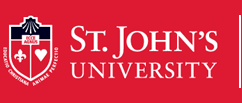Date of Award
2023
Document Type
Dissertation
Degree Name
Education (Ph.D)
Department
Education Specialties
First Advisor
Michael Sampson
Second Advisor
Richard Brown
Abstract
Researchers have studied children’s exposure to television and the impact it has on children’s academic development, and have discovered that educational television programs may positively influence children’s vocabulary growth (Fuenzalida, 2017; Heintz & Wartella, 2012; Larson & Rhan, 2015; Linebarger, Moses, Liebeskind, & McMenamin, 2013; Neuman, Wong, Flynn, & Kaefer, 2019; Neuman, Samudra, Wong, & Kaefer, 2019, Peters & Webb, 2018; Williams & Thomas, 2017). However, few studies have been conducted examining the types of vocabulary words contained in television programming and the frequencies of which these words occur. This study attempted to help enhance the literature by executing a quantitative content analysis of tiered academic vocabulary words found within broadcast television networks’ Saturday morning educational programs. Through the identification of words as either Tier I, Tier II, or Tier III vocabulary within educational programs, aired on major broadcast television networks (CBS, NBC, ABC, FOX), this study contributes to research regarding television and vocabulary acquisition. By discovering the frequencies of tiered academic vocabulary presented throughout free educational television programs, this analysis uncovered proportions of Tier I vocabulary words representing 68.7% (+3%) of all tiered vocabulary words recorded from 990 instances across 25 shows and four network channels. The focus of this study, which considered the existence of Tier II vocabulary words, represented 20.4% (+3%). Tier III vocabulary words represented 10.9% (+2%). As a network, NBC offers viewers the most evidence of Tier II words for educational programming between 7:00am and 12:00pm on Saturday mornings with an average of 10 Tier II words per show.
Recommended Citation
DiMarco, Kimberly, "TIERED VOCABULARY AND EDUCATIONAL TELEVISION: A QUANTITATIVE CONTENT ANALYSIS OF MAJOR BROADCAST TELEVISION NETWORKS" (2023). Theses and Dissertations. 649.
https://scholar.stjohns.edu/theses_dissertations/649
